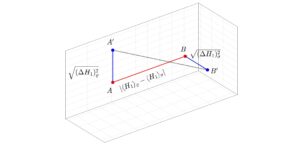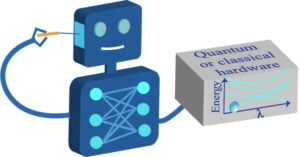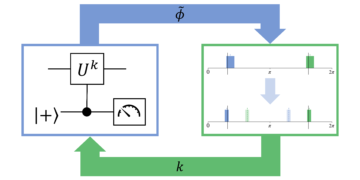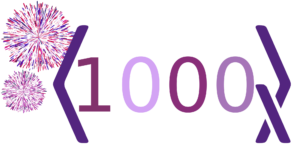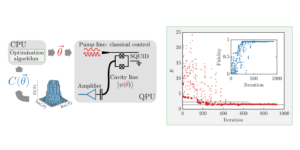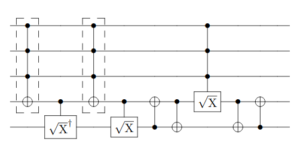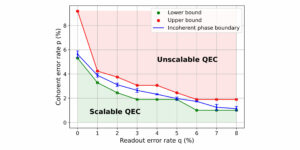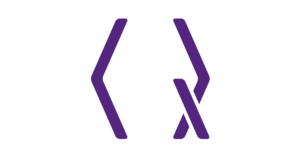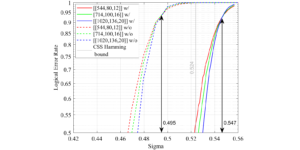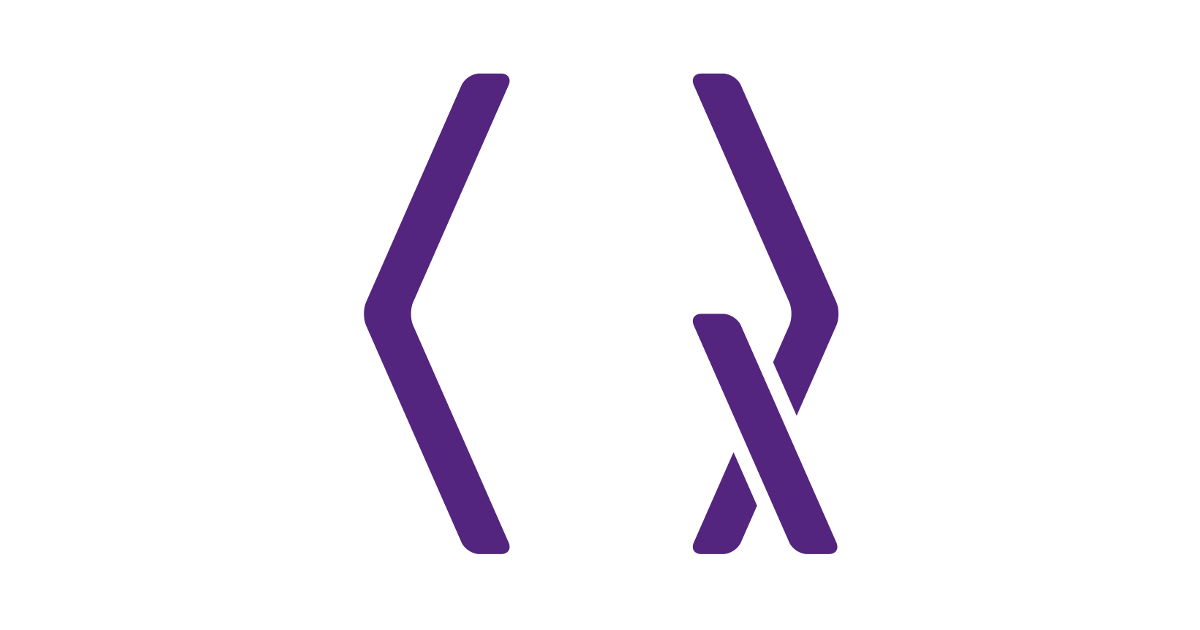
1Quantum Group, Oddelek za računalništvo, Univerza v Oxfordu
2Oddelek za fiziko, Imperial College London
3HKU-Oxford Skupni laboratorij za kvantne informacije in računalništvo
Se vam zdi ta članek zanimiv ali želite razpravljati? Zaslišite ali pustite komentar na SciRate.
Minimalizem
Obstoječe delo o kvantni vzročni strukturi predpostavlja, da je mogoče izvajati poljubne operacije na sistemih, ki nas zanimajo. Toda ta pogoj pogosto ni izpolnjen. Tukaj razširimo okvir za kvantno vzročno modeliranje na situacije, kjer lahko sistem trpi zaradi $textit{sektorskih omejitev}$, to je omejitev na ortogonalnih podprostorih njegovega Hilbertovega prostora, ki se lahko preslikajo drug v drugega. Naš okvir (a) dokazuje, da se številne različne intuicije o vzročnih odnosih izkažejo za enakovredne; (b) kaže, da je mogoče kvantne vzročne strukture v prisotnosti sektorskih omejitev predstaviti z usmerjenim grafom; in (c) opredeljuje natančnost vzročne strukture, v kateri so posamezni sektorji sistema v vzročni zvezi. Kot primer uporabimo naš okvir za domnevne fotonske izvedbe kvantnega stikala, da pokažemo, da medtem ko je njihova grobozrnata vzročna struktura ciklična, je njihova drobnozrnata vzročna struktura aciklična. Zato sklepamo, da ti poskusi uresničujejo nedoločen vzročni red le v šibkem smislu. Predvsem je to prvi argument v ta namen, ki ne temelji na predpostavki, da mora biti vzročni odnos lokaliziran v prostor-času.
Priljubljen povzetek
And yet our most successful scientific theory — quantum theory — suggests our most basic ideas about causation and causal reasoning are somehow mistaken. The famous nonlocal correlations that violate Bell's inequalities resist causal explanation as traditionally understood, and the possibility of putting objects into superpositions seems to allow for situations in which there is no definite fact about the direction of causal influence.
As a result, there has been much effort in recent years to modify our causal notions for a quantum setting. Our paper extends the study of intrinsically quantum causal structures to a new range of scenarios. One of the consequences is that recent experiments that aim to create an indefinite direction of causal influence can be understood as "weakly" indefinite — even more strongly indefinite directions of influence are conceivable.
► BibTeX podatki
► Reference
[1] L. Hardy, ``Towards quantum gravity: a framework for probabilistic theories with non-fixed causal structure,'' Journal of Physics A: Mathematical and Theoretical 40 no. 12, (2007) 3081, arXiv:gr-qc/0608043.
https://doi.org/10.1088/1751-8113/40/12/S12
arXiv: gr-qc / 0608043
[2] G. Chiribella, G. M. D’Ariano, P. Perinotti, and B. Valiron, ``Quantum computations without definite causal structure,'' Physical Review A 88 no. 2, (Aug, 2013) , arXiv:0912.0195 [quant-ph].
https: / / doi.org/ 10.1103 / physreva.88.022318
arXiv: 0912.0195
[3] O. Oreshkov, F. Costa, and Č. Brukner, ``Quantum correlations with no causal order,'' Nature communications 3 no. 1, (2012) 1–8, arXiv:1105.4464 [quant-ph].
https: / / doi.org/ 10.1038 / ncomms2076
arXiv: 1105.4464
[4] M. Araújo, C. Branciard, F. Costa, A. Feix, C. Giarmatzi, and Č. Brukner, ``Witnessing causal nonseparability,'' New Journal of Physics 17 no. 10, (2015) 102001, arXiv:1506.03776 [quant-ph].
https://doi.org/10.1088/1367-2630/17/10/102001
arXiv: 1506.03776
[5] J. Barrett, R. Lorenz, and O. Oreshkov, ``Quantum causal models,'' (2020) , arXiv:1906.10726 [quant-ph].
arXiv: 1906.10726
[6] N. Paunković and M. Vojinović, ``Causal orders, quantum circuits and spacetime: distinguishing between definite and superposed causal orders,'' Quantum 4 (2020) 275, arXiv:1905.09682 [quant-ph].
https://doi.org/10.22331/q-2020-05-28-275
arXiv: 1905.09682
[7] D. Felce and V. Vedral, ``Quantum refrigeration with indefinite causal order,'' Physical Review Letters 125 (Aug, 2020) 070603, arXiv:2003.00794 [quant-ph].
https: / / doi.org/ 10.1103 / PhysRevLett.125.070603
arXiv: 2003.00794
[8] J. Barrett, R. Lorenz, and O. Oreshkov, ``Cyclic quantum causal models,'' Nature Communications 12 no. 1, (2021) 1–15, arXiv:2002.12157 [quant-ph].
https: / / doi.org/ 10.1038 / s41467-020-20456-x
arXiv: 2002.12157
[9] A. Kissinger and S. Uijlen, ``A categorical semantics for causal structure,'' Logical Methods in Computer Science Volume 15, Issue 3 (2019) , arXiv:1701.04732 [quant-ph].
https://doi.org/10.23638/LMCS-15(3:15)2019
arXiv: 1701.04732
[10] R. Lorenz and J. Barrett, ``Causal and compositional structure of unitary transformations,'' Quantum 5 (2021) 511, arXiv:2001.07774 [quant-ph].
https://doi.org/10.22331/q-2021-07-28-511
arXiv: 2001.07774
[11] C. Branciard, M. Araújo, A. Feix, F. Costa, and Č. Brukner, ``The simplest causal inequalities and their violation,'' New Journal of Physics 18 no. 1, (2015) 013008, arXiv:1508.01704 [quant-ph].
https://doi.org/10.1088/1367-2630/18/1/013008
arXiv: 1508.01704
[12] M. Araújo, F. Costa, and i. c. v. Brukner, ``Computational advantage from quantum-controlled ordering of gates,'' Physical Review Letters 113 (Dec, 2014) 250402, arXiv:1401.8127 [quant-ph].
https: / / doi.org/ 10.1103 / PhysRevLett.113.250402
arXiv: 1401.8127
[13] D. Felce, N. T. Vidal, V. Vedral, and E. O. Dias, ``Indefinite causal orders from superpositions in time,'' Physical Review A 105 no. 6, (2022) 062216, arXiv:2107.08076 [quant-ph].
https: / / doi.org/ 10.1103 / PhysRevA.105.062216
arXiv: 2107.08076
[14] L. M. Procopio, A. Moqanaki, M. Araújo, F. Costa, I. A. Calafell, E. G. Dowd, D. R. Hamel, L. A. Rozema, Č. Brukner, and P. Walther, ``Experimental superposition of orders of quantum gates,'' Nature communications 6 no. 1, (2015) 1–6, arXiv:1412.4006 [quant-ph].
https: / / doi.org/ 10.1038 / ncomms8913
arXiv: 1412.4006
[15] G. Rubino, L. A. Rozema, A. Feix, M. Araújo, J. M. Zeuner, L. M. Procopio, Č. Brukner, and P. Walther, ``Experimental verification of an indefinite causal order,'' Science advances 3 no. 3, (2017) e1602589, arXiv:1608.01683 [quant-ph].
https: / / doi.org/ 10.1126 / sciadv.1602589
arXiv: 1608.01683
[16] K. Goswami, C. Giarmatzi, M. Kewming, F. Costa, C. Branciard, J. Romero, and A. G. White, ``Indefinite causal order in a quantum switch,'' Physical review letters 121 no. 9, (2018) 090503, arXiv:1803.04302 [quant-ph].
https: / / doi.org/ 10.1103 / physrevlett.121.090503
arXiv: 1803.04302
[17] G. Rubino, L. A. Rozema, F. Massa, M. Araújo, M. Zych, v. Brukner, and P. Walther, ``Experimental entanglement of temporal order,'' Quantum 6 (2022) 621, arXiv:1712.06884 [quant-ph].
https://doi.org/10.22331/q-2022-01-11-621
arXiv: 1712.06884
[18] X. Nie, X. Zhu, C. Xi, X. Long, Z. Lin, Y. Tian, C. Qiu, X. Yang, Y. Dong, J. Li, T. Xin, and D. Lu, ``Experimental realization of a quantum refrigerator driven by indefinite causal orders,'' Physical Review Letters 129 no. 10, (2022) 100603, arXiv:2011.12580 [quant-ph].
https: / / doi.org/ 10.1103 / PhysRevLett.129.100603
arXiv: 2011.12580
[19] H. Cao, N.-n. Wang, Z.-A. Jia, C. Zhang, Y. Guo, B.-H. Liu, Y.-F. Huang, C.-F. Li, and G.-C. Guo, ``Experimental demonstration of indefinite causal order induced quantum heat extraction,'' (2021) , arXiv:2101.07979 [quant-ph].
arXiv: 2101.07979
[20] K. Goswami and J. Romero, ``Experiments on quantum causality,'' AVS Quantum Science 2 no. 3, (Oct, 2020) 037101, arXiv:2009.00515 [quant-ph].
https: / / doi.org/ 10.1116 / 5.0010747
arXiv: 2009.00515
[21] L. Hardy, ``Quantum gravity computers: On the theory of computation with indefinite causal structure,'' Quantum Reality, Relativistic Causality, and Closing the Epistemic Circle (2009) 379–401, arXiv:quant-ph/0701019.
https://doi.org/10.1007/978-1-4020-9107-0_21
arXiv: kvant-ph / 0701019
[22] G. Chiribella, G. M. D’Ariano, and P. Perinotti, ``Theoretical framework for quantum networks,'' Physical Review A 80 no. 2, (Aug, 2009) , arXiv:0904.4483 [quant-ph].
https: / / doi.org/ 10.1103 / physreva.80.022339
arXiv: 0904.4483
[23] G. Chiribella, G. D’Ariano, P. Perinotti, and B. Valiron, ``Beyond quantum computers,'' (2009) , arXiv:0912.0195v1 [quant-ph].
arXiv: 0912.0195v1
[24] G. Chiribella, ``Perfect discrimination of no-signalling channels via quantum superposition of causal structures,'' Physical Review A 86 no. 4, (Oct, 2012) , arXiv:1109.5154 [quant-ph].
https: / / doi.org/ 10.1103 / physreva.86.040301
arXiv: 1109.5154
[25] T. Colnaghi, G. M. D'Ariano, S. Facchini, and P. Perinotti, ``Quantum computation with programmable connections between gates,'' Physics Letters A 376 no. 45, (Oct, 2012) 2940–2943, arXiv:1109.5987 [quant-ph].
https: / / doi.org/ 10.1016 / j.physleta.2012.08.028
arXiv: 1109.5987
[26] Ä. Baumeler and S. Wolf, ``The space of logically consistent classical processes without causal order,'' New Journal of Physics 18 no. 1, (2016) 013036, arXiv:1507.01714 [quant-ph].
https://doi.org/10.1088/1367-2630/18/1/013036
arXiv: 1507.01714
[27] Ä. Baumeler, A. Feix, and S. Wolf, ``Maximal incompatibility of locally classical behavior and global causal order in multiparty scenarios,'' Physical Review A 90 no. 4, (2014) 042106, arXiv:1403.7333 [quant-ph].
https: / / doi.org/ 10.1103 / PhysRevA.90.042106
arXiv: 1403.7333
[28] M. Araújo, A. Feix, M. Navascués, and Č. Brukner, ``A purification postulate for quantum mechanics with indefinite causal order,'' Quantum 1 (Apr, 2017) 10, arXiv:1611.08535 [quant-ph].
https://doi.org/10.22331/q-2017-04-26-10
arXiv: 1611.08535
[29] A. Vanrietvelde, N. Ormrod, H. Kristjánsson, and J. Barrett, ``Consistent circuits for indefinite causal order,'' (2022) , arXiv:2206.10042 [quant-ph].
arXiv: 2206.10042
[30] H. Reichenbach, Smer časa, zv. 65. Univ of California Press, 1956.
https: / / doi.org/ 10.2307 / 2216858
[31] C. J. Wood and R. W. Spekkens, ``The lesson of causal discovery algorithms for quantum correlations: causal explanations of bell-inequality violations require fine-tuning,'' New Journal of Physics 17 no. 3, (Mar, 2015) 033002, arXiv:1208.4119 [quant-ph].
https://doi.org/10.1088/1367-2630/17/3/033002
arXiv: 1208.4119
[32] J.-M. A. Allen, J. Barrett, D. C. Horsman, C. M. Lee, and R. W. Spekkens, ``Quantum common causes and quantum causal models,'' Physical Review X 7 no. 3, (Jul, 2017) , arXiv:1609.09487 [quant-ph].
https: / / doi.org/ 10.1103 / physrevx.7.031021
arXiv: 1609.09487
[33] J. Pearl, Kavzalnost. Cambridge University Press, 2009.
https: / / doi.org/ 10.1017 / CBO9780511803161
[34] J. Pienaar and Č. Brukner, ``A graph-separation theorem for quantum causal models,'' New Journal of Physics 17 no. 7, (2015) 073020, arXiv:1406.0430v3 [quant-ph].
https://doi.org/10.1088/1367-2630/17/7/073020
arXiv: 1406.0430v3
[35] F. Costa and S. Shrapnel, ``Quantum causal modelling,'' New Journal of Physics 18 no. 6, (June, 2016) 063032, arXiv:1512.07106 [quant-ph].
https://doi.org/10.1088/1367-2630/18/6/063032
arXiv: 1512.07106
[36] J. Pienaar, ``A time-reversible quantum causal model,'' (2019) , arXiv:1902.00129 [quant-ph].
arXiv: 1902.00129
[37] J. Pienaar, ``Quantum causal models via quantum bayesianism,'' Physical Review A 101 no. 1, (2020) 012104, arXiv:1806.00895 [quant-ph].
https: / / doi.org/ 10.1103 / PhysRevA.101.012104
arXiv: 1806.00895
[38] S. Gogioso and N. Pinzani, ``The topology and geometry of causality,'' (2022) . https://arxiv.org/abs/2206.08911.
https:///doi.org/10.48550/ARXIV.2206.08911
arXiv: 2206.08911
[39] G. Chiribella and H. Kristjánsson, ``Quantum shannon theory with superpositions of trajectories,'' Proceedings of the Royal Society A: Mathematical, Physical and Engineering Sciences 475 no. 2225, (May, 2019) 20180903, arXiv:1812.05292 [quant-ph].
https: / / doi.org/ 10.1098 / rspa.2018.0903
arXiv: 1812.05292
[40] Y. Aharonov and D. Bohm, ``Significance of electromagnetic potentials in the quantum theory,'' Physical Review 115 (Aug, 1959) 485–491.
https: / / doi.org/ 10.1103 / PhysRev.115.485
[41] N. Erez, ``AB effect and aharonov–susskind charge non-superselection,'' Journal of Physics A: Mathematical and Theoretical 43 no. 35, (Aug, 2010) 354030, arXiv:1003.1044 [quant-ph].
https://doi.org/10.1088/1751-8113/43/35/354030
arXiv: 1003.1044
[42] F. D. Santo and B. Dakić, ``Two-way communication with a single quantum particle,'' Physical Review Letters 120 no. 6, (Feb, 2018) , arXiv:1706.08144 [quant-ph].
https: / / doi.org/ 10.1103 / physrevlett.120.060503
arXiv: 1706.08144
[43] L.-Y. Hsu, C.-Y. Lai, Y.-C. Chang, C.-M. Wu, and R.-K. Lee, ``Carrying an arbitrarily large amount of information using a single quantum particle,'' Physical Review A 102 (Aug, 2020) 022620, arXiv:2002.10374 [quant-ph].
https: / / doi.org/ 10.1103 / PhysRevA.102.022620
arXiv: 2002.10374
[44] F. Massa, A. Moqanaki, Ämin Baumeler, F. D. Santo, J. A. Kettlewell, B. Dakić , and P. Walther, ``Experimental two-way communication with one photon,'' Advanced Quantum Technologies 2 no. 11, (Sep, 2019) 1900050, arXiv:1802.05102 [quant-ph].
https: / / doi.org/ 10.1002 / qute.201900050
arXiv: 1802.05102
[45] R. Faleiro, N. Paunkovic, and M. Vojinovic, ``Operational interpretation of the vacuum and process matrices for identical particles,'' Quantum 7 (2023) 986, arXiv:2010.16042 [quant-ph].
https://doi.org/10.22331/q-2023-04-20-986
arXiv: 2010.16042
[46] I. Marvian and R. W. Spekkens, ``A generalization of Schur–Weyl duality with applications in quantum estimation,'' Communications in Mathematical Physics 331 no. 2, (2014) 431–475, arXiv:1112.0638 [quant-ph].
https://doi.org/10.1007/s00220-014-2059-0
arXiv: 1112.0638
[47] AW Harrow, Aplikacije koherentne klasične komunikacije in Schurjeva transformacija kvantni teoriji informacij. Doktorska disertacija, Massachusetts Institute of Technology, 2005. arXiv: quant-ph / 0512255.
arXiv: kvant-ph / 0512255
[48] G. M. Palma, K.-A. Suominen, and A. K. Ekert, ``Quantum computers and dissipation,'' Proceedings of the Royal Society A 452 (1996) 567–584, arXiv:quant-ph/9702001.
https: / / doi.org/ 10.1098 / rspa.1996.0029
arXiv: kvant-ph / 9702001
[49] L.-M. Duan and G.-C. Guo, ``Preserving coherence in quantum computation by pairing the quantum bits,'' Physical Review Letters 79 (1997) 1953–1956, arXiv:quant-ph/9703040.
https: / / doi.org/ 10.1103 / PhysRevLett.79.1953
arXiv: kvant-ph / 9703040
[50] P. Zanardi and M. Rasetti, ``Noiseless quantum codes,'' Physical Review Letters 79 no. 17, (1997) 3306, arXiv:quant-ph/9705044.
https: / / doi.org/ 10.1103 / PhysRevLett.79.3306
arXiv: kvant-ph / 9705044
[51] D. A. Lidar, I. L. Chuang, and K. B. Whaley, ``Decoherence-free subspaces for quantum computation,'' Physical Review Letters 81 no. 12, (1998) 2594, arXiv:quant-ph/9807004.
https: / / doi.org/ 10.1103 / PhysRevLett.81.2594
arXiv: kvant-ph / 9807004
[52] A. Beige, D. Braun, B. Tregenna, and P. L. Knight, ``Quantum computing using dissipation to remain in a decoherence-free subspace,'' Physical Review Letters 85 no. 8, (2000) 1762.
https: / / doi.org/ 10.1103 / PhysRevLett.85.1762
[53] P. G. Kwiat, A. J. Berglund, J. B. Altepeter, and A. G. White, ``Experimental verification of decoherence-free subspaces,'' Science 290 no. 5491, (2000) 498–501.
https: / / doi.org/ 10.1126 / znanost.290.5491.498
[54] O. Oreshkov, ``Time-delocalized quantum subsystems and operations: on the existence of processes with indefinite causal structure in quantum mechanics,'' Quantum 3 (2019) 206, arXiv:1801.07594 [quant-ph].
https://doi.org/10.22331/q-2019-12-02-206
arXiv: 1801.07594
[55] A. Vanrietvelde, H. Kristjánsson, and J. Barrett, ``Routed quantum circuits,'' Quantum 5 (Jul, 2021) 503, arXiv:2011.08120 [quant-ph].
https://doi.org/10.22331/q-2021-07-13-503
arXiv: 2011.08120
[56] A. Vanrietvelde and G. Chiribella, ``Universal control of quantum processes using sector-preserving channels,'' Quantum Information and Computation 21 no. 15-16, (Dec, 2021) 1320–1352, arXiv:2106.12463 [quant-ph].
https: / / doi.org/ 10.26421 / QIC21.15-16-5
arXiv: 2106.12463
[57] M. Wilson and A. Vanrietvelde, ``Composable constraints,'' (2021) , arXiv:2112.06818 [math.CT].
arXiv: 2112.06818
[58] A. A. Abbott, J. Wechs, D. Horsman, M. Mhalla, and C. Branciard, ``Communication through coherent control of quantum channels,'' Quantum 4 (Sep, 2020) 333, arXiv:1810.09826 [quant-ph].
https://doi.org/10.22331/q-2020-09-24-333
arXiv: 1810.09826
[59] H. Kristjánsson, G. Chiribella, S. Salek, D. Ebler, and M. Wilson, ``Resource theories of communication,'' New Journal of Physics 22 no. 7, (Jul, 2020) 073014, arXiv:1910.08197 [quant-ph].
https://doi.org/10.1088/1367-2630/ab8ef7
arXiv: 1910.08197
[60] I. Friend, ``Private communication,'' (2022).
[61] G. Chiribella, G. M. D’Ariano, and P. Perinotti, ``Transforming quantum operations: Quantum supermaps,'' EPL (Europhysics Letters) 83 no. 3, (Jul, 2008) 30004, arXiv:0804.0180 [quant-ph].
https://doi.org/10.1209/0295-5075/83/30004
arXiv: 0804.0180
[62] M. Zych, F. Costa, I. Pikovski, and Č. Brukner, ``Bell’s theorem for temporal order,'' Nature communications 10 no. 1, (2019) 1–10, arXiv:1708.00248 [quant-ph].
https: / / doi.org/ 10.1038 / s41467-019-11579-x
arXiv: 1708.00248
[63] N. S. Móller, B. Sahdo, and N. Yokomizo, ``Quantum switch in the gravity of Earth,'' Physical Review A 104 no. 4, (2021) 042414, arXiv:2012.03989 [quant-ph].
https: / / doi.org/ 10.1103 / PhysRevA.104.042414
arXiv: 2012.03989
[64] J. Wechs, C. Branciard, and O. Oreshkov, ``Existence of processes violating causal inequalities on time-delocalised subsystems,'' Nature Communications 14 no. 1, (2023) 1471, arXiv:2201.11832 [quant-ph].
https://doi.org/10.1038/s41467-023-36893-3
arXiv: 2201.11832
[65] V. Vilasini, ``An introduction to causality in quantum theory (and beyond) (master's thesis),'' (2017) . https://foundations.ethz.ch/wp-content/uploads/2019/07/vilasini_master_thesis-v2.pdf.
https:///foundations.ethz.ch/wp-content/uploads/2019/07/vilasini_master_thesis-v2.pdf
[66] V. Vilasini, ``Causality in definite and indefinite space-times (extended abstract for qpl 2020),'' (2020) . https://wdi.centralesupelec.fr/users/valiron/qplmfps/papers/qs01t3.pdf.
https:///wdi.centralesupelec.fr/users/valiron/qplmfps/papers/qs01t3.pdf
[67] C. Portmann, C. Matt, U. Maurer, R. Renner, and B. Tackmann, ``Causal boxes: quantum information-processing systems closed under composition,'' IEEE Transactions on Information Theory 63 no. 5, (2017) 3277–3305. https://doi.org/10.1109/TIT.2017.2676805.
https: / / doi.org/ 10.1109 / TIT.2017.2676805
[68] B. d'Espagnat, ``An elementary note about `mixtures','' Preludes in Theoretical Physics in honor of VF Weisskopf (1966) 185.
[69] B. d'Espagnat, Konceptualne osnove kvantne mehanike. CRC Press, 2018.
https: / / doi.org/ 10.1201 / 9780429501449
[70] S. D. Bartlett, T. Rudolph, and R. W. Spekkens, ``Reference frames, superselection rules, and quantum information,'' Review of Modern Physics 79 (Apr, 2007) 555–609, arXiv:quant-ph/0610030.
https: / / doi.org/ 10.1103 / RevModPhys.79.555
arXiv: kvant-ph / 0610030
[71] V. Vilasini and R. Renner, ``Embedding cyclic causal structures in acyclic spacetimes: no-go results for process matrices,'' (2022) , arXiv:2203.11245 [quant-ph].
arXiv: 2203.11245
[72] B. Schumacher and M. D. Westmoreland, ``Locality and information transfer in quantum operations,'' Quantum Information Processing 4 no. 1, (2005) 13–34, arXiv:quant-ph/0406223.
https: / / doi.org/ 10.1007 / s11128-004-3193-y
arXiv: kvant-ph / 0406223
Navedel
[1] Nikola Paunković and Marko Vojinović, "Equivalence Principle in Classical and Quantum Gravity", Vesolje 8 11, 598 (2022).
[2] Julian Wechs, Cyril Branciard, and Ognyan Oreshkov, "Existence of processes violating causal inequalities on time-delocalised subsystems", Nature Communications 14, 1471 (2023).
[3] Huan Cao, Jessica Bavaresco, Ning-Ning Wang, Lee A. Rozema, Chao Zhang, Yun-Feng Huang, Bi-Heng Liu, Chuan-Feng Li, Guang-Can Guo, and Philip Walther, "Semi-device-independent certification of indefinite causal order in a photonic quantum switch", Optika 10 5, 561 (2023).
[4] Augustin Vanrietvelde, Nick Ormrod, Hlér Kristjánsson, and Jonathan Barrett, "Consistent circuits for indefinite causal order", arXiv: 2206.10042, (2022).
[5] Pedro R. Dieguez, Vinicius F. Lisboa, and Roberto M. Serra, "Thermal devices powered by generalized measurements with indefinite causal order", Fizični pregled A 107 1, 012423 (2023).
[6] Matt Wilson, Giulio Chiribella, and Aleks Kissinger, "Quantum Supermaps are Characterized by Locality", arXiv: 2205.09844, (2022).
[7] Marco Fellous-Asiani, Raphaël Mothe, Léa Bresque, Hippolyte Dourdent, Patrice A. Camati, Alastair A. Abbott, Alexia Auffèves, and Cyril Branciard, "Comparing the quantum switch and its simulations with energetically constrained operations", Fizični pregled raziskav 5 2, 023111 (2023).
[8] Nick Ormrod, V. Vilasini, and Jonathan Barrett, "Which theories have a measurement problem?", arXiv: 2303.03353, (2023).
[9] Tein van der Lugt, Jonathan Barrett, and Giulio Chiribella, "Device-independent certification of indefinite causal order in the quantum switch", arXiv: 2208.00719, (2022).
[10] Robin Lorenz in Sean Tull, "Vzročni modeli v nizovnih diagramih", arXiv: 2304.07638, (2023).
[11] Michael Antesberger, Marco Túlio Quintino, Philip Walther in Lee A. Rozema, "Higher-order Process Matrix Tomography of a passively-stable Quantum SWITCH", arXiv: 2305.19386, (2023).
[12] Martin Sandfuchs, Marcus Haberland, V. Vilasini, and Ramona Wolf, "Security of differential phase shift QKD from relativistic principles", arXiv: 2301.11340, (2023).
[13] Ricardo Faleiro, Nikola Paunkovic, and Marko Vojinovic, "Operational interpretation of the vacuum and process matrices for identical particles", arXiv: 2010.16042, (2020).
[14] Eleftherios-Ermis Tselentis and Ämin Baumeler, "Admissible Causal Structures and Correlations", arXiv: 2210.12796, (2022).
[15] Ricardo Faleiro, Nikola Paunkovic, and Marko Vojinovic, "Operational interpretation of the vacuum and process matrices for identical particles", Kvant 7, 986 (2023).
Zgornji citati so iz SAO / NASA ADS (zadnjič posodobljeno 2023-06-03 12:58:29). Seznam je morda nepopoln, saj vsi založniki ne dajejo ustreznih in popolnih podatkov o citiranju.
On Storitev, ki jo citira Crossref ni bilo najdenih podatkov o navajanju del (zadnji poskus 2023-06-03 12:58:28).
Ta dokument je objavljen v Quantumu pod Priznanje avtorstva Creative Commons 4.0 International (CC BY 4.0) licenca. Avtorske pravice ostajajo pri izvirnih imetnikih avtorskih pravic, kot so avtorji ali njihove ustanove.
- Distribucija vsebine in PR s pomočjo SEO. Okrepite se še danes.
- PlatoAiStream. Podatkovna inteligenca Web3. Razširjeno znanje. Dostopite tukaj.
- Kovanje prihodnosti z Adryenn Ashley. Dostopite tukaj.
- Kupujte in prodajajte delnice podjetij pred IPO s PREIPO®. Dostopite tukaj.
- vir: https://quantum-journal.org/papers/q-2023-06-01-1028/
- :ima
- : je
- :ne
- :kje
- ][str
- 1
- 10
- 102
- 107
- 11
- 12
- 13
- 14
- 15%
- 17
- 1996
- 1998
- 20
- 2001
- 2005
- 2008
- 2011
- 2012
- 2013
- 2014
- 2015
- 2016
- 2017
- 2018
- 2019
- 2020
- 2021
- 2022
- 2023
- 22
- 23
- 24
- 26
- 27
- 28
- 30
- 31
- 39
- 40
- 49
- 50
- 60
- 66
- 67
- 7
- 70
- 72
- 8
- 80
- 9
- a
- O meni
- nad
- POVZETEK
- dostop
- aciklični
- napredno
- napredek
- Prednost
- pripadnosti
- Cilj
- algoritmi
- vsi
- omogočajo
- znesek
- an
- in
- Še ena
- uporaba
- aplikacije
- Uporabi
- april
- SE
- Argument
- AS
- predpostavka
- avgust
- Avtor
- Avtorji
- Osnovni
- BE
- Nosijo
- ker
- bilo
- Verjemite
- Bell
- med
- Poleg
- škatle
- Break
- vendar
- by
- california
- Cambridge
- CAN
- rak
- knjigovodska
- Vzrok
- vzroki
- certificiranje
- chang
- kanali
- značilna
- naboj
- Krog
- zaprto
- zapiranje
- Kode
- KOHERENTNO
- College
- komentar
- Skupno
- pogosto
- Commons
- Komunikacija
- Communications
- primerjavo
- dokončanje
- računanje
- izračuni
- računalnik
- Računalništvo
- računalniki
- računalništvo
- koncepti
- idejni
- zaključuje
- stanje
- povezave
- Posledice
- dosledno
- omejitve
- nadzor
- avtorske pravice
- CRC
- ustvarjajo
- datum
- Določa
- To
- Oddelek
- naprave
- diagrami
- drugačen
- smer
- Smeri
- Odkritje
- Diskriminacija
- razpravlja
- vozi
- e
- Zemlja
- učinek
- Učinki
- prizadevanje
- spodbujanje
- Inženiring
- Enakovredna
- Eter (ETH)
- Tudi
- vsak dan
- Primer
- Poskusi
- Pojasnite
- Razlaga
- razširiti
- Se razširi
- pridobivanje
- Dejstvo
- slavni
- februar
- prva
- za
- je pokazala,
- Temelji
- Okvirni
- prijatelj
- iz
- Gates
- geometrija
- Globalno
- graf
- teža
- skupina
- harvard
- Imajo
- tukaj
- imetniki
- HTTPS
- huang
- i
- Ideje
- enako
- IEEE
- Imperial
- Imperial College
- in
- individualna
- neenakosti
- vplivajo
- Podatki
- Inštitut
- Institucije
- obresti
- Zanimivo
- Facebook Global
- razlago
- v
- intrinzično
- Predstavitev
- vprašanje
- IT
- ITS
- JavaScript
- skupno
- Revija
- junij
- Knight
- Laboratorij
- velika
- Zadnja
- pustite
- Lee
- lekcija
- li
- Licenca
- lidar
- življenje
- lin
- Seznam
- lokalno
- logično
- Long
- več
- Marco
- Marcus
- Martin
- Massachusetts
- Tehnološki inštitut Massachusetts
- mojster
- math
- matematični
- Matrix
- Maj ..
- Merjenje
- meritve
- mehanika
- Metode
- Michael
- Model
- modeliranje
- modeli
- sodobna
- spremenite
- mesec
- več
- Najbolj
- veliko
- morajo
- Narava
- omrežij
- Novo
- št
- predvsem
- Številka
- predmeti
- oktober
- of
- pogosto
- on
- ONE
- samo
- odprite
- operativno
- operacije
- or
- Da
- naročila
- izvirno
- naši
- ven
- seznanjanje
- Papir
- delec
- ljudje
- opravlja
- faza
- fizično
- Fizika
- platon
- Platonova podatkovna inteligenca
- PlatoData
- možnost
- poganja
- Prisotnost
- pritisnite
- Načelo
- Načela
- problem
- Postopki
- Postopek
- Procesi
- obravnavati
- dokazuje
- zagotavljajo
- objavljeno
- Založnik
- založnikov
- Dajanje
- Kvantna
- kvantni računalniki
- kvantne informacije
- Kvantna mehanika
- kvantna omrežja
- kvantna superpozicija
- RAIN
- območje
- Reality
- realizacija
- uresničitev
- nedavno
- reference
- Odnosi
- ostajajo
- ostanki
- zastopan
- zahteva
- Raziskave
- Omejitve
- povzroči
- Rezultati
- pregleda
- Robin
- royal
- pravila
- s
- Enako
- scenariji
- Znanost
- ZNANOSTI
- Sean
- Sektorji
- varnost
- glej
- Zdi se,
- semantika
- Občutek
- nastavitev
- premik
- Prikaži
- Razstave
- sam
- situacije
- kajenje
- Društvo
- Vesolje
- ulica
- String
- Močno
- Struktura
- študija
- uspešno
- Uspešno
- taka
- Predlaga
- primerna
- superpozicija
- Preklop
- sistem
- sistemi
- Tehnologije
- Tehnologija
- da
- O
- njihove
- Teoretični
- Teorija
- Tukaj.
- zato
- toplotna
- te
- diplomsko delo
- jih
- stvari
- ta
- skozi
- čas
- Naslov
- do
- tradicionalno
- Transakcije
- prenos
- Transform
- transformacije
- OBRAT
- pod
- razumel
- univerza
- posodobljeno
- URL
- uporabo
- Vakuumska
- Preverjanje
- zelo
- preko
- Kršitev
- POVREDA
- Kršitve
- Obseg
- W
- želeli
- je
- we
- kdaj
- ki
- medtem
- bele
- Wilson
- z
- brez
- Wolf
- les
- delo
- deluje
- wu
- X
- xi
- leto
- let
- še
- zefirnet

